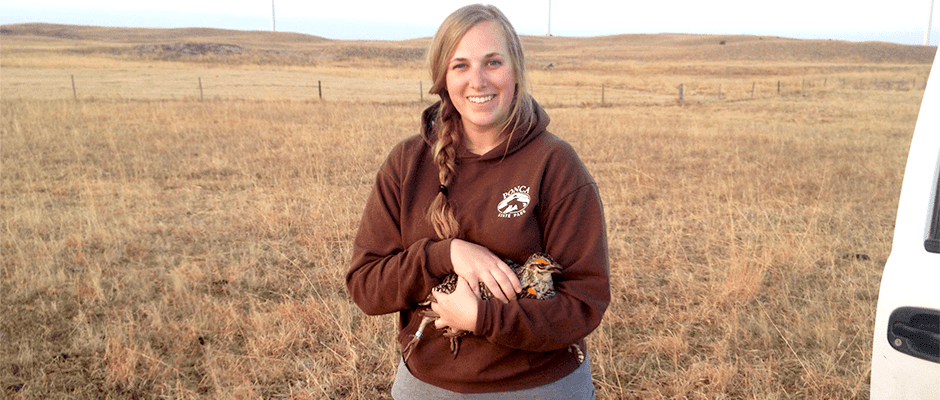Share this article
Greater prairie chicken nests unaffected by wind energy development
As the wide-open landscapes that greater prairie chickens (Tympanuchus cupido) occupy are increasingly eyed by energy companies for oil and gas, solar and wind facilities, biologists are taking a look at how these operations may affect the birds.
A recent study in Nebraska found a small wind farm there had no effect on greater prairie chickens’ nesting success.
“There’s a really fast pace of wind energy development in the United States and in the Midwest especially,” said lead author Jocelyn Olney Harrison, who worked on the project as part of her master’s work at the University of Nebraska-Lincoln. “So this project was launched because the Nebraska Game and Parks Commission was looking to understand the effects of wind energy on greater prairie chickens.”
In the study published in The Condor: Ornithological Applications, Harrison and her colleagues trapped greater prairie chickens in spring of 2013 and 2014 on leks at a range of distances from the wind farm and fitted them with a satellite transmitter or a VHF radio collar to track them and monitor their nesting success. The team also noted other factors such as vegetation cover, distance to transmission line, soil type and weather.
“There was no effect of the wind facility or transmission line on nest site location or nest survival,” Harrison said.
Researchers did find that the birds avoided nesting near roads, however, which Harrison thinks may be due to predators or people using the road. The researchers also found that the amount of vegetation cover is important in where they place their nests, which previous studies had also found.
Because this facility was small, though — just 36 turbines — Harrison said future studies should see if results are different on large wind farms.
“Grassland management is very important,” she said, “and we need to be vigilant in thinking about anthropogenic structures we’re putting on the landscape.”
Header Image: Jocelyn Olney Harrison holds a greater prairie chicken that she trapped near a wind energy development site in Nebraska. Image courtesy of Jocelyn Olney Harrison.








